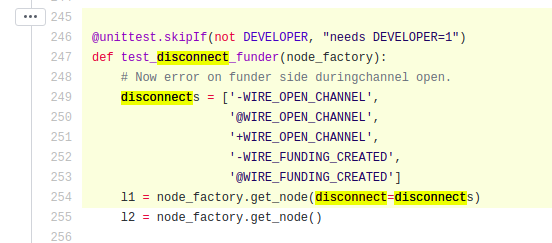one like = one fact about or feature of c-lightning dev (max 100)
(this is a lot like how chrome uses one process per browser tab)
(As an aside, I'm currently working on cleaning this up a bit so hopefully this won't be true for much longer)


Keep Current with c-lightning, commits of
This Thread may be Removed Anytime!
Twitter may remove this content at anytime, convert it as a PDF, save and print for later use!

1) Follow Thread Reader App on Twitter so you can easily mention us!
2) Go to a Twitter thread (series of Tweets by the same owner) and mention us with a keyword "unroll"
@threadreaderapp unroll
You can practice here first or read more on our help page!

